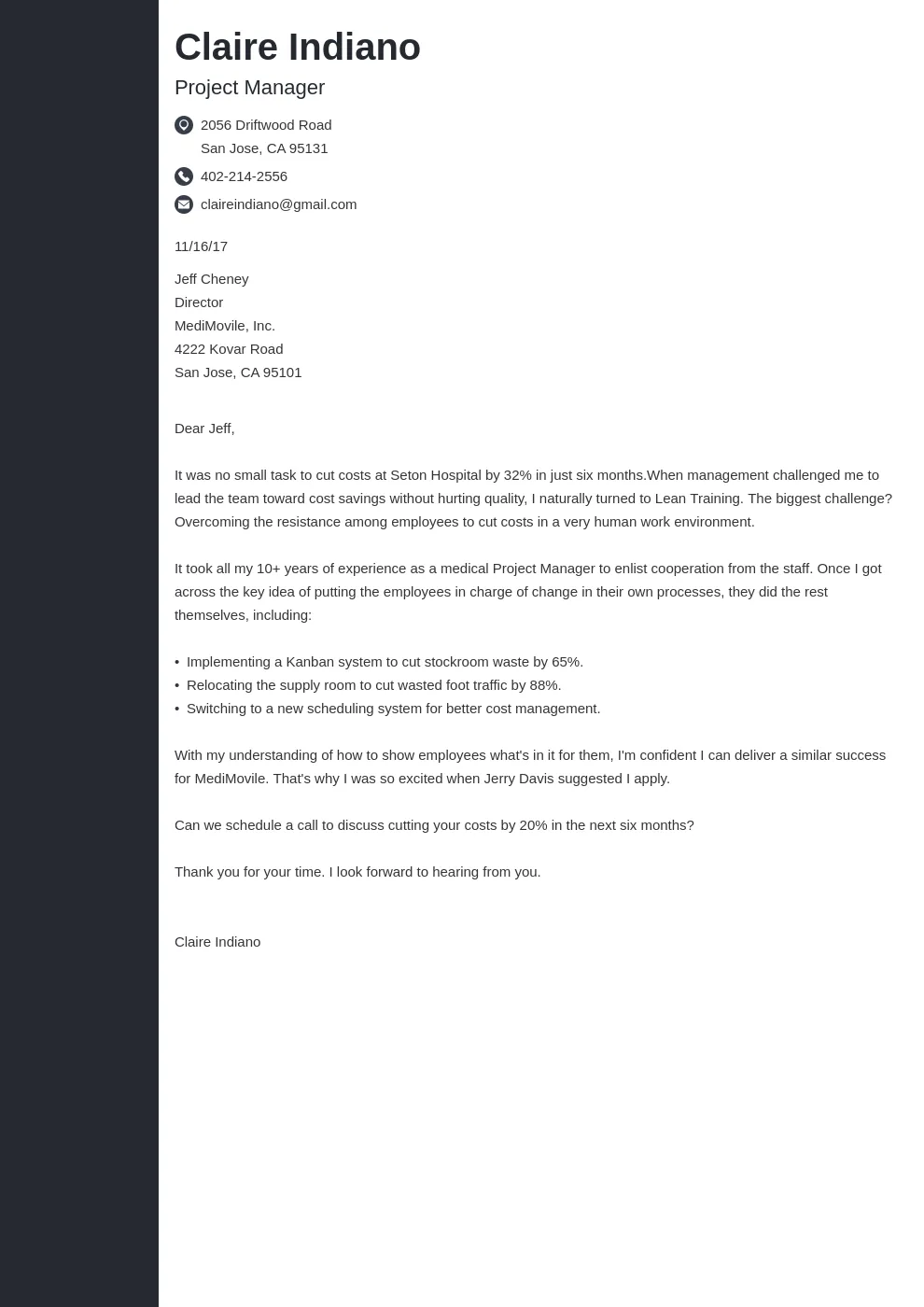What is an Introduction in a Cover Letter?
The introduction of a cover letter is the crucial first paragraph that immediately grabs the reader’s attention. It serves as your initial opportunity to make a positive impression and entice the hiring manager to continue reading. Think of it as the opening act, setting the stage for the rest of your application. It provides a snapshot of who you are, what you’re seeking, and why you’re a good fit for the role. A well-crafted introduction is essential for making your cover letter stand out from the stack and securing that all-important interview.
Purpose of an Introduction
The primary purpose of the introduction is to immediately inform the hiring manager about your reason for writing. It should clearly state the position you are applying for and where you found the opportunity, whether it was a job board, company website, or referral. Additionally, it should quickly convey your understanding of the company and the role. This demonstrates that you’ve done your research and are genuinely interested in the position. Furthermore, a strong introduction sets the tone for the rest of the cover letter, showcasing your professionalism, writing skills, and personality.
Key elements to include

A compelling introduction typically includes several key elements. First, clearly state the specific job you are applying for. Second, briefly mention where you discovered the job posting. Third, provide a concise overview of your most relevant skills and experience, highlighting what makes you a strong candidate. Fourth, express your enthusiasm for the role and the company, demonstrating your genuine interest. Finally, consider including a hook or a compelling statement that captures the reader’s attention from the start. Ensure each element complements the others, creating a cohesive and engaging introduction.
How to write a compelling introduction
Writing a compelling introduction requires a strategic approach to capture the hiring manager’s interest. Begin by researching the company and the specific role to understand their values and needs. Tailor your introduction to reflect this understanding, demonstrating that you’ve taken the time to learn about the organization. Avoid generic phrases, and instead, opt for a personalized tone. Use strong action verbs to highlight your skills and accomplishments. Keep the introduction concise, aiming for a paragraph of three to five sentences. Proofread meticulously to eliminate errors in grammar, spelling, and punctuation, ensuring a professional presentation. The aim is to immediately convey that you’re the ideal candidate and make the reader want to continue reading.
Start with a strong opening statement
The opening statement is crucial for grabbing the hiring manager’s attention. You can start with a compelling fact about the company or the industry, or you could mention a specific project or accomplishment that aligns with the job requirements. Another approach is to express your passion for the company’s mission or values, demonstrating your genuine interest and commitment. Consider using a relevant quote or a brief anecdote that immediately connects you to the job. The goal is to pique the reader’s interest from the first sentence, making them eager to learn more about you and your qualifications. Use a tone appropriate for the company culture.
Highlight your relevant skills and experience
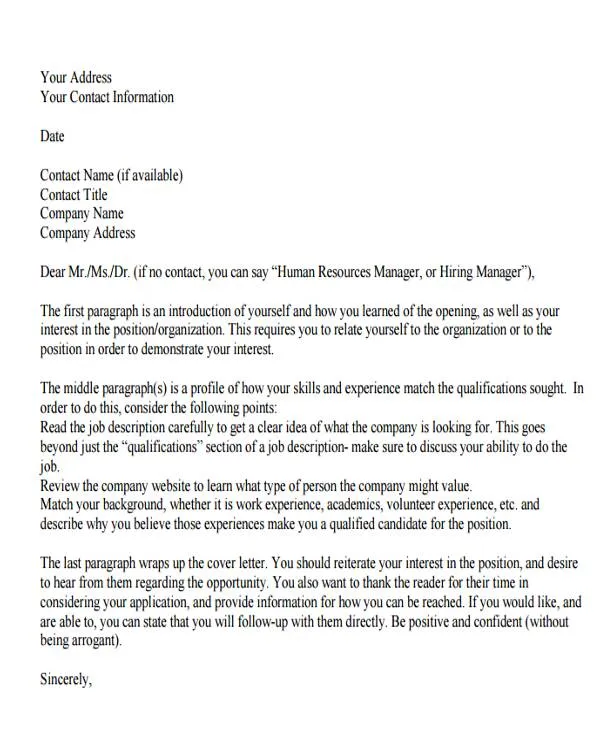
After capturing the reader’s attention, the next step is to briefly showcase your relevant skills and experience. Identify the key requirements listed in the job description and tailor your introduction to match. Highlight your most significant accomplishments and quantify them whenever possible to provide concrete evidence of your capabilities. Use action verbs to demonstrate your skills and the impact you’ve made in previous roles. Avoid simply listing your skills; instead, weave them into a narrative that explains how you’ve applied them to achieve results. This approach shows that you possess the necessary qualifications and that you are a proactive individual who is able to successfully take on new challenges.
Express your enthusiasm for the role and company
Expressing genuine enthusiasm for the role and company is essential. It shows the hiring manager that you are genuinely interested and motivated to contribute to the organization. Mention specific aspects of the company that resonate with you, such as its values, mission, or recent achievements. Demonstrate your understanding of the role’s responsibilities and how your skills align with them. Clearly explain why you are interested in the position and what you hope to achieve. This enthusiasm should be evident in your tone and writing style. This will allow you to present yourself not just as a qualified candidate, but also as someone who is genuinely excited about the opportunity.
Tailoring the Introduction
Tailoring your introduction is crucial to making a strong impression. Generic introductions can be perceived as impersonal and uninspired, while a tailored introduction shows that you have invested time and effort in understanding the company and the specific role. This is why you must begin by carefully reviewing the job description to identify the key requirements and desired skills. Then, research the company’s mission, values, and culture to align your introduction with their ethos. Personalize the introduction by using the hiring manager’s name (if possible) and referencing specific company projects or initiatives that resonate with you. The goal is to make your introduction unique to each application, demonstrating your interest and making you stand out.
Matching the introduction to the job description
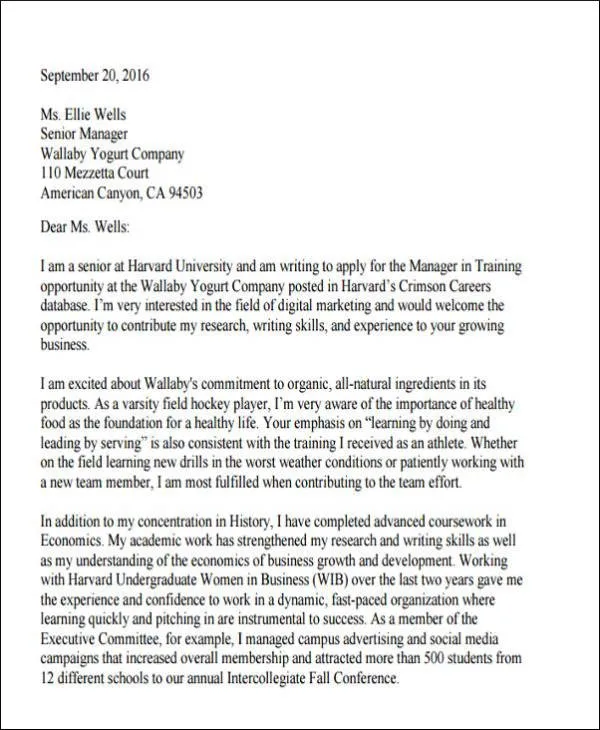
Matching the introduction to the job description is a fundamental aspect of tailoring your cover letter. Carefully analyze the job posting to identify the key requirements, skills, and qualifications sought by the employer. Then, highlight the relevant experiences and skills from your background that align with these requirements. Use keywords and phrases from the job description throughout your introduction to demonstrate that you have the necessary qualifications. Additionally, address any specific requests mentioned in the job posting, such as mentioning a referral source or responding to a particular prompt. The goal is to demonstrate that you are the ideal candidate by showing that you are able to meet the company’s needs.
Adapting for different industries
Adapting your introduction to suit different industries is necessary. Each industry has its own conventions and expectations. Research the industry’s communication norms. Consider the tone, style, and language that are typically used in cover letters within that industry. In more formal industries, such as finance or law, maintain a professional and polished tone. Highlight your achievements and provide concrete examples. For creative industries, such as marketing or design, you may have more flexibility. Use a more creative and engaging introduction. The key is to demonstrate your understanding of the industry and to tailor your writing to meet its standards. Focus on industry-specific keywords and showcase your relevant skills.
Common Mistakes to Avoid
Several common mistakes can undermine the effectiveness of your cover letter introduction. One significant mistake is being too generic. A generic introduction fails to capture the reader’s attention. Make sure that you are not using a generic template; personalize it to match the specific job. Another frequent error is focusing solely on your needs rather than the company’s. A cover letter is about demonstrating the value you bring to the employer, so highlight how your skills and experiences can benefit the company. Furthermore, overlooking the company’s values is a mistake. Make sure you align your introduction to the company’s mission and culture.
Being too generic
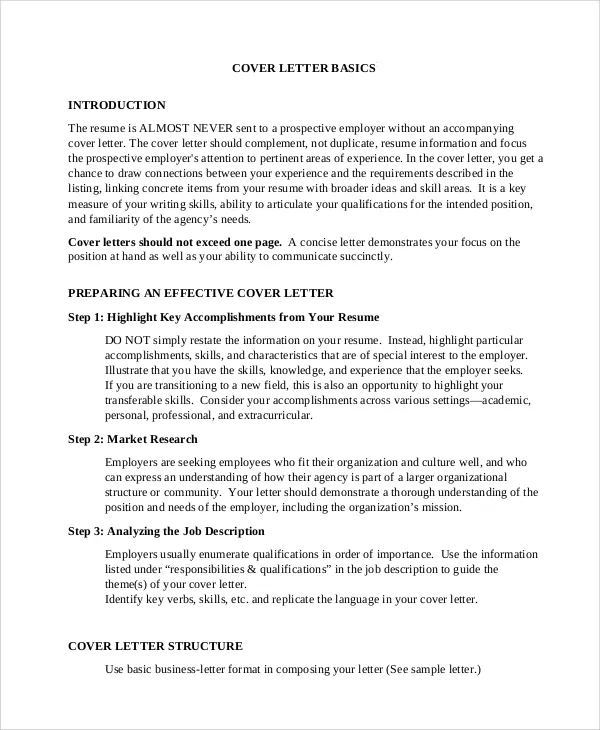
Avoid generic introductions, which are often perceived as impersonal and lack impact. These introductions often start with cliché phrases. They don’t demonstrate your understanding of the specific role or the company. Instead, replace generic phrases with tailored content. Research the company and role before writing. Highlight your relevant skills and achievements, and personalize the introduction to show that you’ve done your homework and are genuinely interested in the opportunity. Replace boilerplate language with specific details.
Focusing solely on your needs
Focusing solely on your needs, such as your career goals, is another common mistake in introductions. While it’s important to mention your aspirations, prioritize demonstrating what you can offer the employer. Frame your introduction around the value you bring to the company. Show how your skills and experiences will benefit the organization. Highlight how you can contribute to their goals and objectives. Remember, the employer is primarily interested in what you can do for them, so make sure your introduction reflects that focus, showcasing your abilities and how they align with the company’s needs.
Overlooking the company’s values
Overlooking the company’s values can be a significant misstep in cover letter introductions. Companies often emphasize their core values and seek employees who align with those principles. Before writing your introduction, research the company’s mission, vision, and values. In your introduction, briefly mention how your values align with theirs, demonstrating your understanding and interest in the organization’s culture. Referencing specific company initiatives, projects, or statements related to their values also shows your commitment. Show that you share the same values. Doing so enhances your chances of making a positive impression and being selected for the next step in the hiring process.
Examples of Effective Introductions
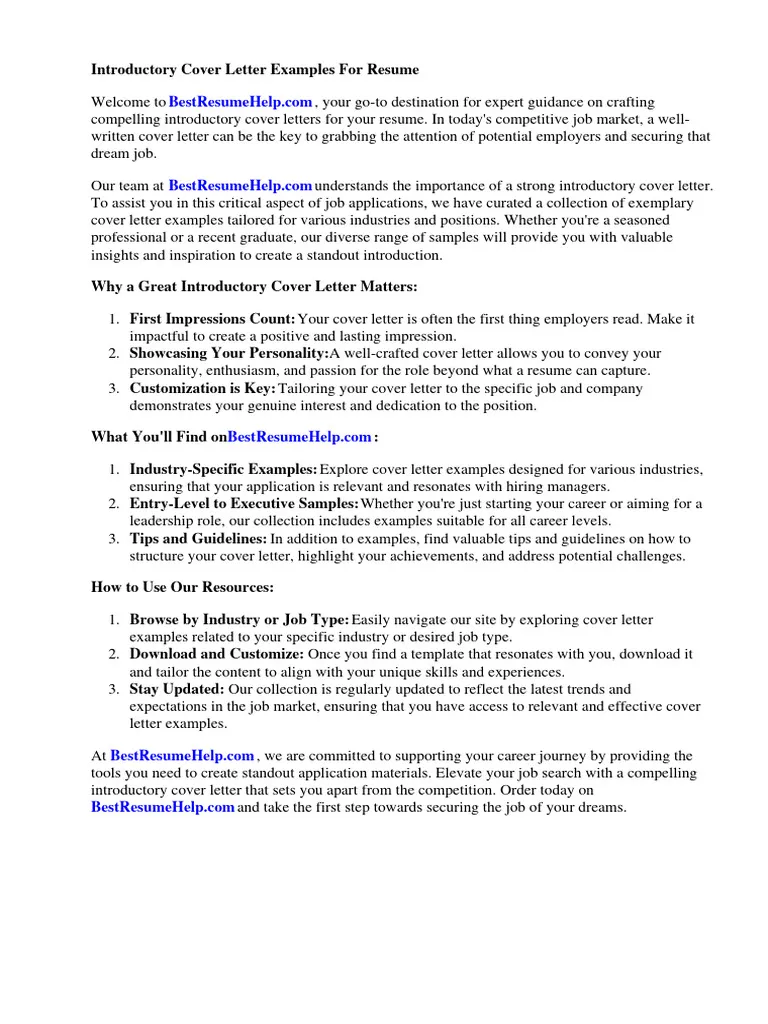
Reviewing examples of effective cover letter introductions can provide valuable insights. Pay attention to the different approaches. See how each example starts with a strong hook, immediately capturing the reader’s attention. Notice how they tailor their introductions to the specific job and company. Analyze the use of action verbs, and how they highlight skills and accomplishments. Look for examples that express genuine enthusiasm. By studying these examples, you can gain inspiration. You can also adapt them to your own cover letter. This will help you create an introduction that is both engaging and personalized, increasing your chances of success.
Introduction Example 1
Dear [Hiring Manager name], I am writing to express my enthusiastic interest in the Marketing Manager position at [Company Name], as advertised on [Platform]. With five years of experience driving successful marketing campaigns and a proven track record of increasing brand awareness and revenue, I am confident that I possess the skills and passion to excel in this role. In my previous role at [Previous Company], I led a team of [Number] and increased lead generation by [Percentage] within [Timeframe] by implementing innovative strategies. I am particularly drawn to [Company Name]’s commitment to [Company Value], and I am eager to contribute my expertise to help the company achieve its marketing goals.
Introduction Example 2
Dear [Hiring Manager Name], I am excited to apply for the Software Engineer position at [Company Name], as I have been following your innovative work in [Specific Area] for some time. As a highly motivated software engineer with three years of experience in developing and implementing scalable software solutions, I am eager to contribute to your team. In my previous role, I developed and maintained [Number] of applications, consistently delivering projects on time and within budget. I am particularly impressed by [Company Name]’s commitment to [Specific Project or Initiative] and I am eager to use my skills to help your company achieve success.
Introduction Example 3

Dear [Hiring Manager Name], I am writing to express my interest in the Customer Service Representative position at [Company Name], as advertised on [Platform]. With a passion for providing excellent customer service and [Number] years of experience in the industry, I am confident that I possess the skills and dedication to thrive in this role. In my previous role, I consistently exceeded customer satisfaction goals. I resolved [Number] customer issues daily. I am eager to join [Company Name]’s customer-centric team and contribute my expertise to enhance customer experience. I am excited about the opportunity to help your company grow its customer base by providing outstanding customer service.
Tips for Proofreading Your Introduction
Proofreading your introduction is an essential step in ensuring that your cover letter makes a positive impression. Errors in grammar, spelling, and punctuation can reflect negatively on your attention to detail and professionalism. Before submitting your cover letter, carefully check for any errors. Use a grammar checker to help you catch any mistakes you might have missed. It is also recommended to have another person proofread your introduction. They can offer a fresh perspective and spot errors you might overlook. Thorough proofreading will help ensure that your introduction is polished, professional, and error-free. This will make you stand out as a strong candidate.
Check for grammar and spelling errors
Carefully check your introduction for grammar and spelling errors, as these mistakes can undermine your credibility. Run a grammar check to identify and correct any grammatical errors, such as subject-verb disagreements, incorrect tense usage, and punctuation errors. Also, review the spelling of all words. Ensure that the names of people and companies are spelled correctly. Consider using a spell-checker as a tool to detect any typos you may have missed. Reading your introduction aloud can help you identify any awkward phrasing or grammatical errors. Take time to proofread thoroughly. This ensures your introduction is polished and professional, demonstrating your attention to detail.
Ensure a professional tone
Maintain a professional tone in your introduction. A professional tone is critical in establishing your credibility and making a positive impression. It is demonstrated by your choice of language, style, and overall writing approach. Avoid slang, jargon, or overly casual language, as these can appear unprofessional. Instead, use clear, concise, and professional language that conveys your qualifications and enthusiasm. Make sure that your writing is polished and reflects attention to detail. Avoid using emojis and colloquialisms that can make your introduction seem unprofessional. Consider your audience. This will allow you to tailor your tone for each job application. This shows you’re a serious candidate.
Verify the information is accurate
Verify the accuracy of all information in your introduction to avoid any misunderstandings or misrepresentations. Double-check the details of the job title, company name, and the name of the hiring manager. Cross-reference the job description and ensure that your qualifications and experience are correctly presented. Make sure any dates, numbers, or specific examples are accurate. Any inaccuracies can damage your credibility and diminish your chances of getting an interview. Checking all the details helps ensure that your introduction is truthful and trustworthy, demonstrating your attention to detail. It’s better to be accurate, and avoid creating a negative first impression. The truth is the best way to go.
